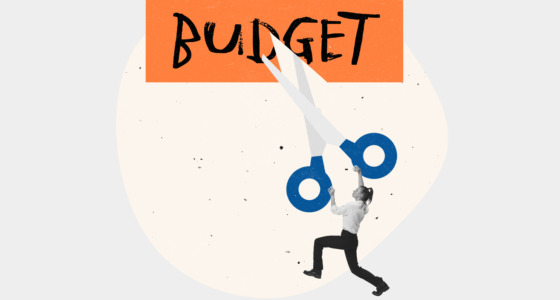

Investing in the stock market can be lucrative, but it also comes with its fair share of risks. Unsystematic risk is a crucial aspect that investors need to be aware of among the many other types. It refers to the risk specific to an individual company, sector, or industry and is not faced by the entire market. This article will delve deeper into unsystematic risk, its types, and how it can be measured and managed.
What is an unsystematic risk?
Unsystematic risk, also known as specific, is the type of risk associated with a particular company, industry, or sector. This type of risk is unique to a specific asset or investment and can be averted through a well-diversified portfolio.
The risk arises from various factors such as economic conditions, competition, natural disasters, changes in laws and regulations, and mismanagement of a company. There are several sources of unsystematic risk, including:
- Company-Specific Risks: This includes risks related to a specific firm, such as bankruptcy, changes in management, or poor financial performance.
- Industry Risks: These are the risks associated with a particular industry, such as changes in government regulations, competition, or technological advances that may affect the industry.
- Sector Risks: It is associated with a particular sector, such as changes in demand for the sector’s products or services or changes in the sector’s economic conditions.
Some examples of unsystematic risk are:
- Changes in a company’s leadership and management can lead to a change in its direction and financial performance.
- Disruptions in the supply chain can result in decreased company production and revenue.
- Alterations in government regulations can affect a specific industry, leading to increased costs or decreased revenue for firms within it.
Investors can manage unsystematic risk by diversifying their portfolios and funding in a mix of companies and industries. This helps to reduce the impact of unsystematic risk on the overall portfolio, as a loss in one investment can be offset by gains in others.
Unsystematic risk is a crucial consideration for investors, and understanding its sources and how to manage it is vital to reliable strategies. With the right approach, investors can minimize the impact of the risk on their portfolios and achieve their financial goals.
Understanding unsystematic risk
Unsystematic is a type of risk specific to a particular stock, company, industry, or sector and is distinct from systematic risk, affecting the whole market. In other words, unsystematic risk is the risk associated with a specific investment or portfolio, whereas systematic affects the entire market.
Investors can manage unsystematic risk by diversifying their portfolios and putting funds in different companies, industries, and sectors. This is crucial to minimize the impact of specific threats on their portfolios.
Understanding unsystematic risk sources are essential to achieve optimal portfolio performance. Investors can make informed decisions and achieve financial goals if they know and manage the risk well.
Types of unsystematic risk
There are several types of unsystematic risk, including business, financial, and event risk.
Business risk is inherent uncertainty in a company’s operations and financial performance. Changes in consumer preferences, increased competition, and technological advancements can cause it.
Financial risk refers to the uncertainty of a firm’s financial position and the potential impact on its ability to meet its financial obligations.
Event risk refers to unexpected occasions that can significantly impact a business’s operations, such as natural disasters, major accidents, and changes in laws and regulations.

Unsystematic vs. systematic risk
Systematic and unsystematic risk are two important concepts in finance and investing. Below is a comprehensive list comparing them.
Systematic risk:
- It is also known as market or non-diversifiable risk.
- It reflects the uncertainty that affects the overall market, not just a specific asset or sector.
- It cannot be minimized through a well-diversified portfolio.
- Its examples include economic recessions, natural disasters, and changes in government policies.
Unsystematic risk:
- It is also known as a specific or diversifiable risk.
- It is specific to a particular stock, company, industry, or sector.
- It can be reduced through diversification by investing in a mix of different stocks, industries, and sectors.
- Its examples include company bankruptcy, management changes, and supply chain disruptions.
- It reflects the uncertainty that is unique to a specific investment or portfolio.
Both systematic and unsystematic risks are important considerations for investors. By understanding both types of risk and diversifying their portfolio, market participants can minimize the impact of risk on their investments and achieve their financial goals.
Example of unsystematic risk
A practical example of unsystematic risk is investing in a single company, such as XYZ Inc. If the firm experiences a decline in sales due to a new competitor entering the market, the value of an investment in that company may decrease. This decrease in value is an example of unsystematic risk as it is specific to XYZ Inc. and not the market.
To mitigate this risk, investors could diversify their portfolios by putting funds in a few more companies in different industries, for example, technology and retail firms. If the sales of XYZ Inc. decrease, the potential loss may be offset by the performance of the other organizations in the portfolio.
FAQs
Below, we have provided answers to the most important questions investors have about unsystematic risk.
What is the difference between systematic and unsystematic risk?
Systematic risk affects interest rate fluctuations, changes in inflation rates, and natural disasters, among other things. This type of risk cannot be diversified away as it affects the entire market, regardless of the diversity of an investor’s portfolio. On the other hand, unsystematic risk is specific to a particular business, sector, or industry and can be reduced through diversification.
What are the types of unsystematic risk?
The main types of unsystematic risk include business, financial, event, and industry-specific risks. The first refers to the uncertainty in a company’s operations and financial performance. Financial risk refers to the uncertainty of a firm’s financial position, and event risk refers to unexpected events that can significantly impact its operations. Industry-specific risk is inherent in a particular industry, such as the oil and gas industry’s exposure to fluctuations in the price of oil and gas.
How is unsystematic risk measured?
It can be measured by analyzing a company’s financial statements, including its balance sheet, income, and cash flow statement. Additionally, industry-specific data and economic indicators can be applied to assess a particular industry’s level of unsystematic risk. Using various financial metrics, such as return on equity (ROE) and debt-to-equity ratio, can also provide insight into a firm’s level of unsystematic risk.
The bottom line
In conclusion, unsystematic risk is an essential factor that investors must consider when entering the stock market. Understanding its types and their impact on specific investments is crucial for making informed decisions.
By diversifying your portfolio, you can minimize its exposure to unsystematic risk. By staying informed and constantly learning, you can reduce losses. However, it’s important to note that the risk cannot be 100% eliminated.









